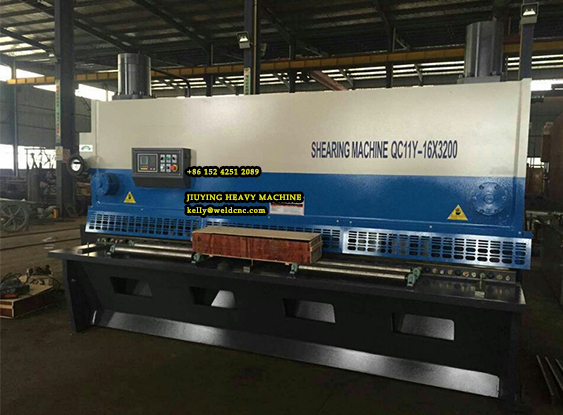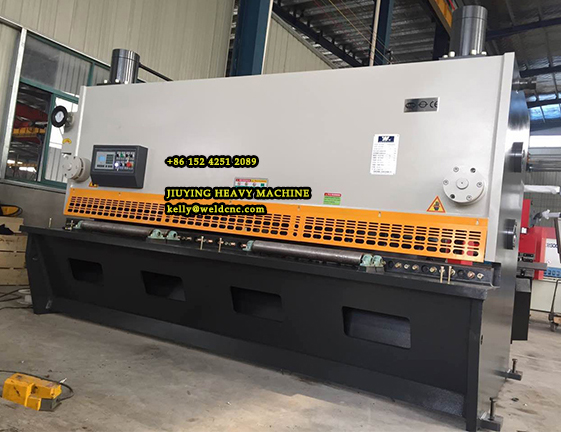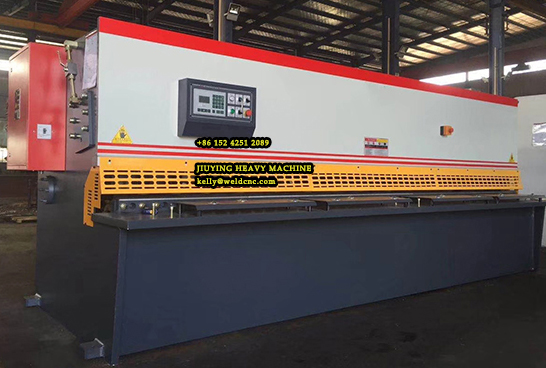Safe Cutting: A Guide to Operating Shearing Machines
Release Time : 2023-12-19 View Count : 次Introduction:In the field of metal fabrication, a shearing machine is an indispensable tool. However, its operation involves various safety considerations. This article will provide a detailed overview of the key points in shearing machine cutting operations, specific usage methods, and operational steps to ensure both personnel safety and efficient production.
I. Key Points in Cutting Operations:
- Material Inspection: Examine the material of the sheet, ensuring thickness symmetry, checking for surface irregularities or defects, considering grain direction, and determining the cutting sequence.
- Blade Clearance Adjustment: Adjust the upper and lower blade clearances based on the sheet thickness, ensuring accurate cuts and consistent width at both ends.
- Dimensional Checks: Regularly check the dimensions (length, width, diagonal) of the cut sheet during the cutting process to ensure alignment with the blueprint.
- Sheet Classification: Categorize and stack cut sheets neatly, label them with names and dimensions, and maintain an undamaged surface.
Safe Operations: When cutting small parts, ensure the shearing machine presses down on a secure cutting area, and prioritize operational safety.
II. Specific Usage Methods for Shearing Machines:
- Idle Test Cutting: Start the shearing machine and perform several cycles of idle cutting to familiarize yourself with its performance. Ensure it can handle sheets of different thicknesses during trial cuts (T≤6mm).
- Blade Clearance Adjustment: Before trial cutting, adjust the blade clearance. Failure to do so can affect blade durability.
Observing Oil Pressure: While cutting, monitor oil pressure by opening the pressure gauge. For cutting 1.0mm steel sheets, the pressure should be less than 1.5Mpa. Avoid cutting steel sheets thicker than 6mm to prevent damage to the machine.
III. Operational Steps for Shearing Machines:
- Familiarity with Equipment Structure: Operators must be familiar with the general structure and performance of the equipment, and overloading should be strictly avoided.
- Equipment Preparation: Before starting the equipment, lubricate the cylinder according to lubrication requirements and perform a thorough check.
- Blade Adjustment: Prior to work, adjust the upper and lower blades, determining the blade clearance based on the thickness of the steel sheet. Typically, the clearance for cutting standard thicknesses ranges between 8-10%, and adjustments must be made and locked for each change in sheet thickness.
- Operational Details: During use, refrain from wiping the machine or tabletop. Do not place debris or tools on the machine to avoid damaging the blades. When shearing, ensure the sheet is firmly pressed to prevent material rebound and potential injuries.
- Equipment Inspection: Regularly check the locking mechanism, clutch, brakes, and foot switch for any abnormalities. Exercise caution during cutting, and immediately stop cutting if any irregularities are detected, notifying maintenance personnel for inspection.
Safety and Clean Production: Adhere to safety and cleanliness regulations, promoting a safe and environmentally friendly workplace.
Conclusion:By understanding the key points of shearing machine cutting operations, specific usage methods, and operational steps, operators can ensure both the efficient completion of tasks and their personal safety. Regular equipment checks and maintenance are crucial for safe operations and the assurance of production efficiency.
Your Safety is Paramount: For any inquiries or doubts, feel free to send your questions, and we will provide professional guidance.
Contact:Mr. Liu
Phone:13322202758
QQ:605712576
Email:liu@mingchenggroup.com










